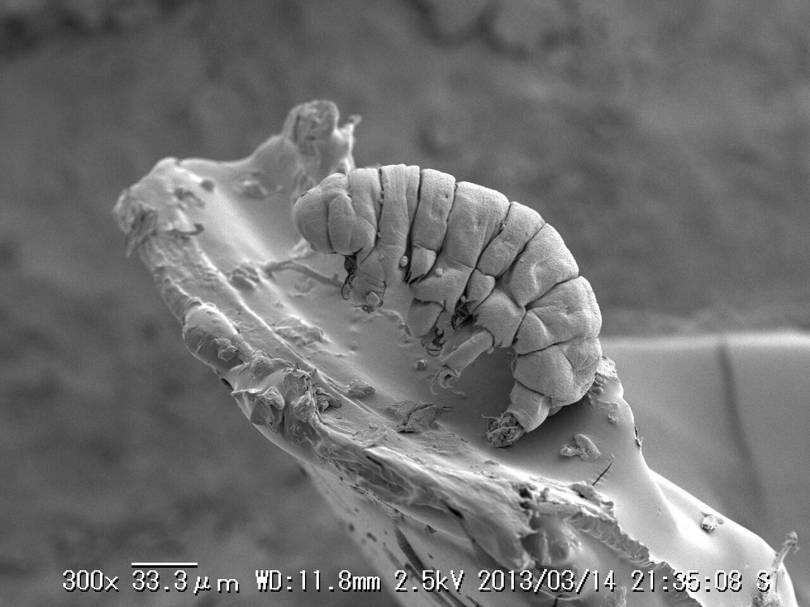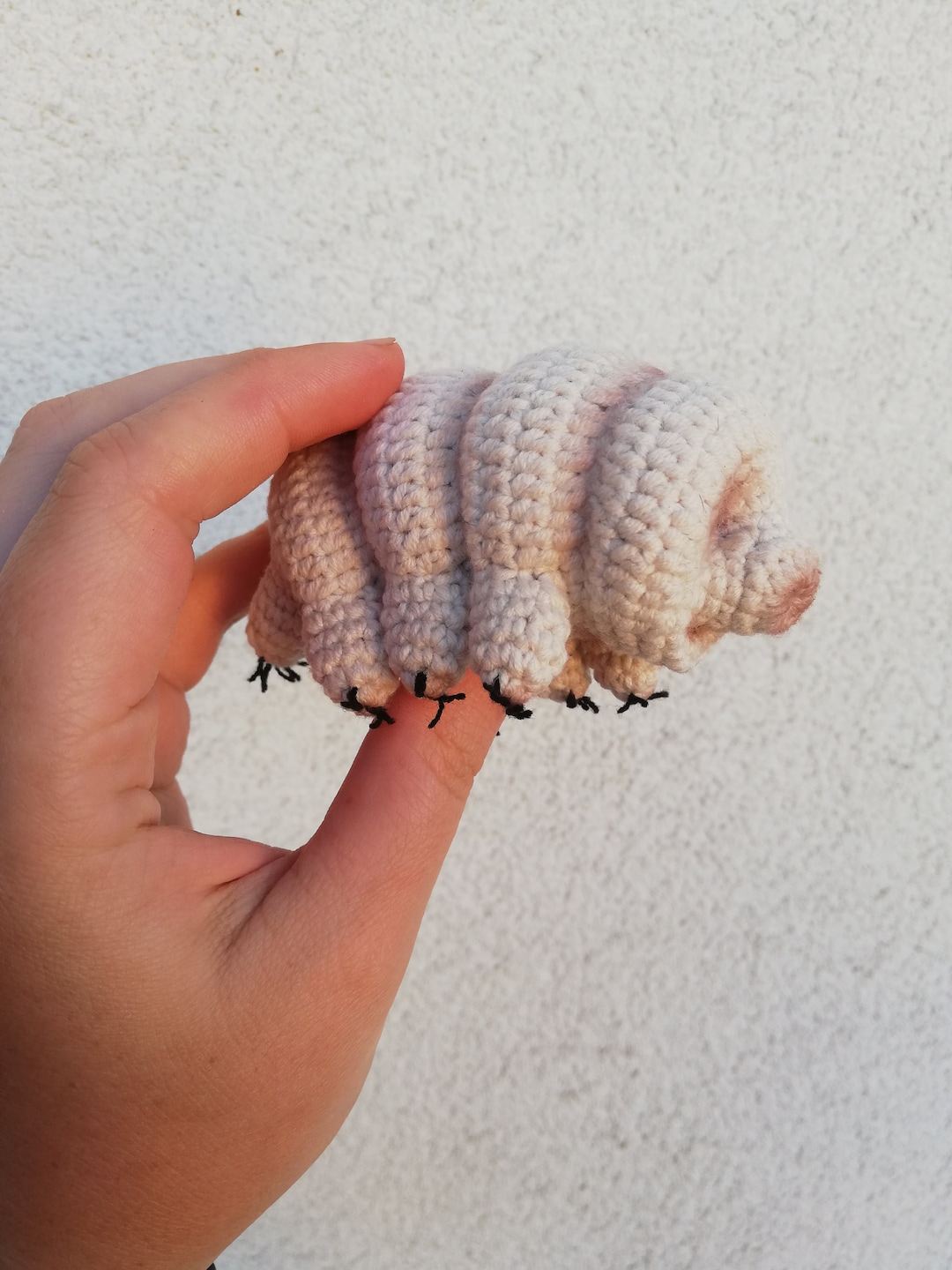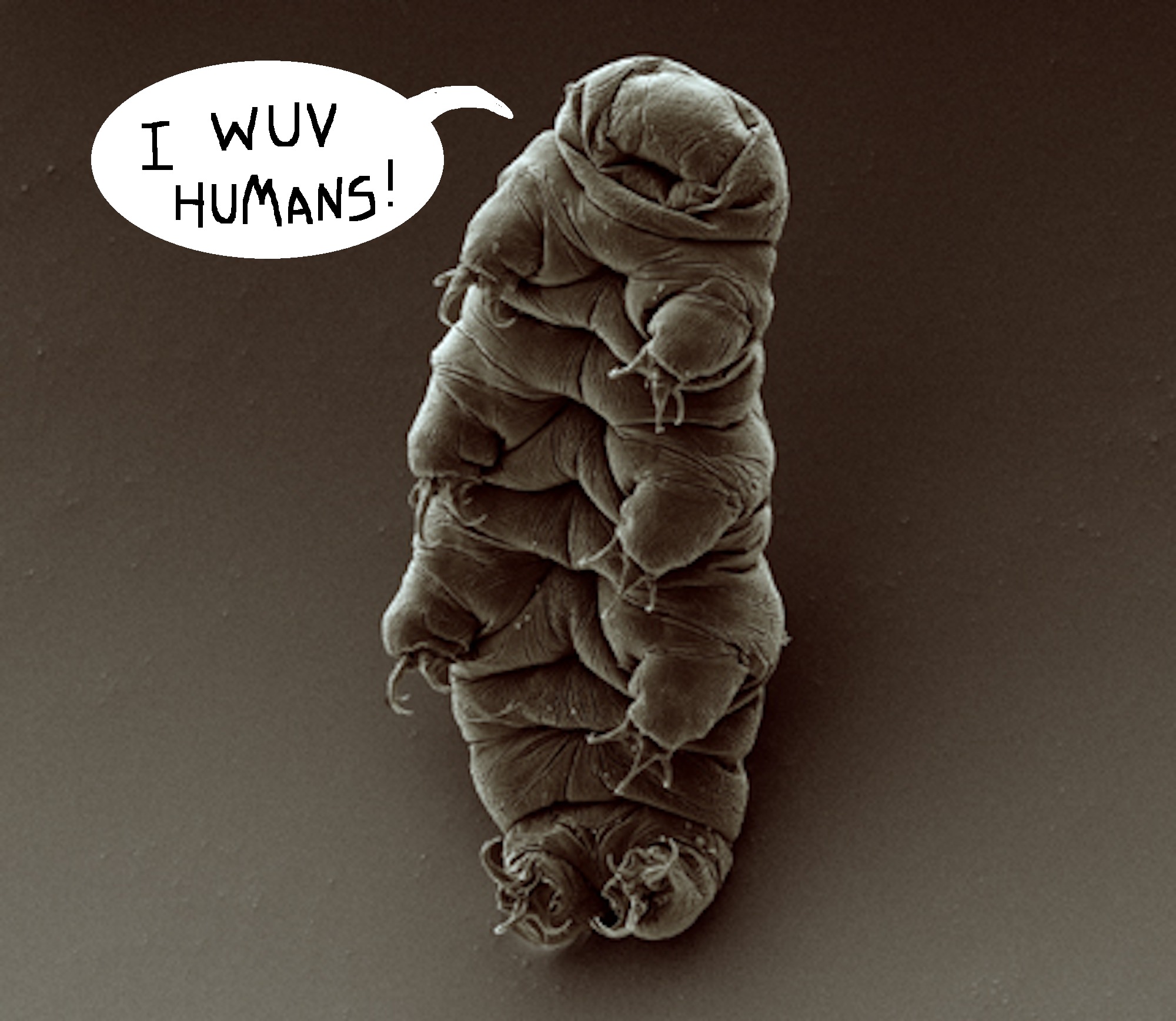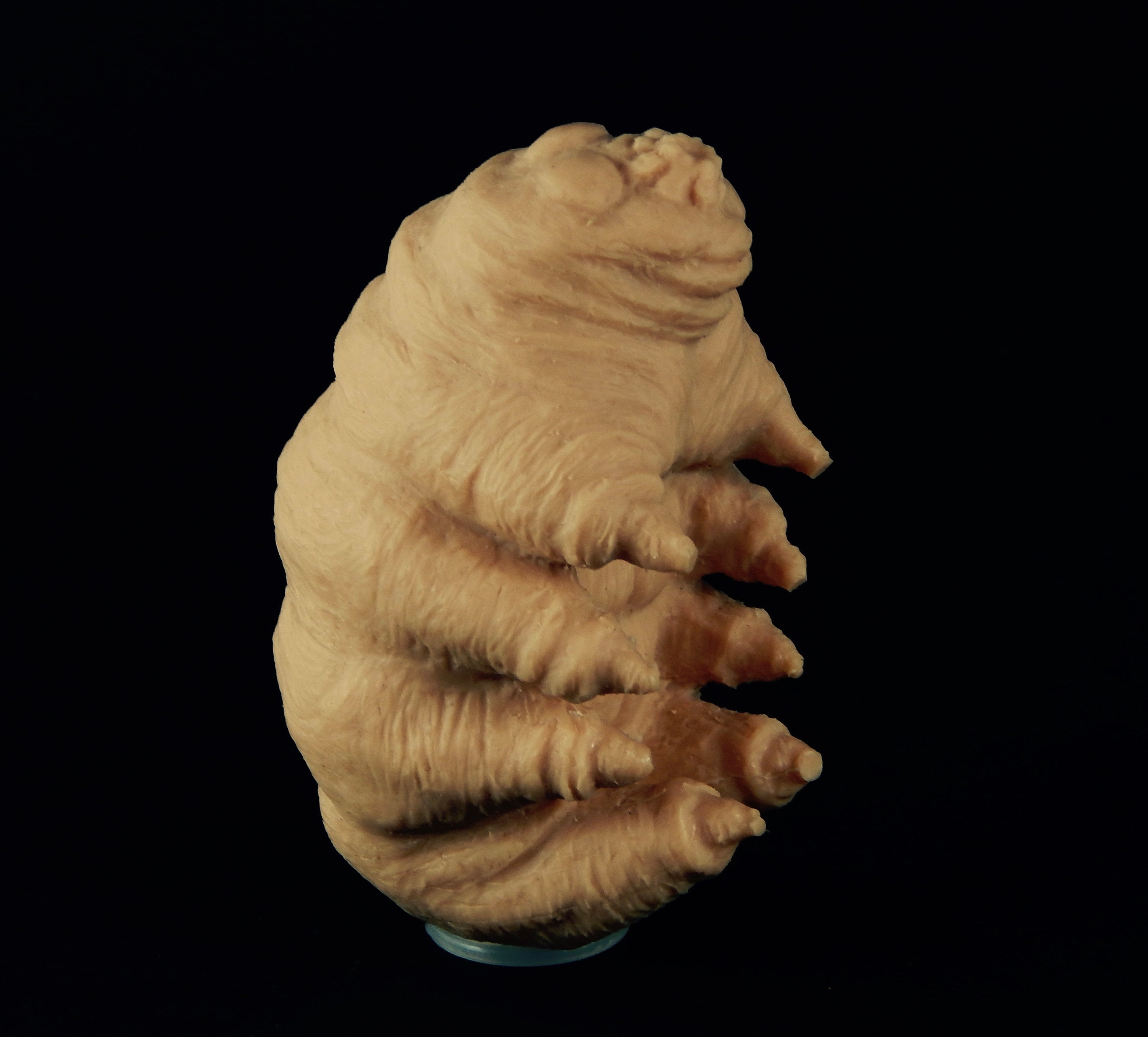
25 of the most common questions about tardigrades, answered
The biggest tardigrade is about the size of the tip of a sharpened pencil, but most are smaller. More like the width of a hair. They're kinda like a squishy pillow with eight legs, four on each side, with finger-like little claws at the end of each leg. And a round, snout-like opening on its face.

How to find a pet tardigrade and care for it Boing Boing Flipboard
Omnivore Size: 0.5 millimeter What is a tardigrade? Tardigrades are microscopic eight-legged animals that have been to outer space and would likely survive the apocalypse. Bonus: They look.

How to catch tardigrades, with biologist Mark Blaxter WIRED UK
Tardigrades are near the edge of visibility for most human eyes. A typical tardigrade is about 0.5 mm (0.02 inch) long, and even the largest ones are less than 2 mm (0.07 inch) in length.

GlowintheDark Finger Tardigrades Archie McPhee
tardigrade, (phylum Tardigrada), any of more than 1,100 species of free-living tiny invertebrates belonging to the phylum Tardigrada. They are considered to be close relatives of arthropods (e.g., insects, crustaceans ). Tardigrades are mostly about 1 mm (0.04 inch) or less in size.

Tardigrade On Finger ubicaciondepersonas.cdmx.gob.mx
FAST FACTS. • Tardigrades have been on Earth for about 600 million years, about 400 million years before dinosaurs. • Tardigrades are sometimes called "moss piglets.". • Tardigrade eggs take between 40 and 90 days to hatch. You can boil them, bake them, deep-freeze them, crush them, dehydrate them, or even blast them into space.

What are Tardigrades? Earth Unplugged YouTube
O n 11 April 2019, a spacecraft crashed on to the Moon. The Israeli Beresheet probe was supposed to land gently in the Mare Serenitatis, a huge plain of basalt rock formed in a volcanic eruption.
.png/1200px-SEM_image_of_Milnesium_tardigradum_in_active_state_-_journal.pone.0045682.g001-2_(white_background).png)
Tardigrade Wikipedia
A tardigrade going for a walk. (Lisset Duran) Tardigrades are undoubtedly weird. Dehydrate them into glass, then fire them out of a gun, and once you rehydrate them you can still have a living creature. Their outsides aren't the only thing that's tough either, with scientists finding last year that they also have special DNA armor proteins.

ArtStation Tardigrade Ring
Image by Caramosca. One trait all tardigrades share is their eight stubby legs. Tardigrades have three legs on each side of the body, and two on the back. The legs often have long, bear-like claws on them. You'd think with eight legs, tardigrades should move pretty fast, but they don't. Instead, they are slow and clumsy.

Leave Tardigrades Alone! Defector
For starters, a tardigrade is an animal. A very, very small animal. One of its many nicknames is "water bear" because, as mentioned earlier, some people say it resembles a panda bear (if a panda bear were microscopic and had eight legs). It's also been called a moss piglet, a pygmy rhinoceros and a pygmy armadillo.

A new understanding of how tardigrades are protected in extreme conditions Tardigrade, Macro
Tardigrades, often called water bears or moss piglets, are near-microscopic animals that are extremely resilient. Diane Nelson, a tardigrade researcher who works in Great Smoky Mountains.
.jpg)
A Smart Contact Lens, Trouble for Water Bears, and More News WIRED
Dupuytren's disease (DD) is a chronic benign fibroproliferative disorder of the palmar and digital fasciae. It is characterized by formation of nodules and fibrous cords that may eventually lead to contractures with permanent flexion of the finger joints.

Everything you need (and want) to know about tardigrades
Tardigrades — which grow up to a millimeter in length — swim with four sets of stubby legs that appear much too small for their bodies. At the end of each leg is a set of stubby little claws.

Tardigrade Protein Helps Human DNA Withstand Radiation, May Enable Long Distance Space Travel
Tardigrades are everywhere. They're tiny — usually under a millimeter long — and they're mostly transparent, so they're easy to miss. But you probably walk by them every day. We've.

A tiny microbe inspired this scientist’s big dreams
Tardigrade Tardigrades ( / ˈtɑːrdɪɡreɪdz / ), [1] known colloquially as water bears or moss piglets, [2] [3] [4] [5] are a phylum of eight-legged segmented micro-animals. [2] [6] They were first described by the German zoologist Johann August Ephraim Goeze in 1773, who called them Kleiner Wasserbär ("little water bear"). [7]
:max_bytes(150000):strip_icc()/tardigrade-closeup-01-0ca5270d7f4a4cad8c00b47afdacf6ac.jpg)
10 Tardigrade Facts That Will Astound You
Footage of scuttling tardigrades in the species Hypsibius exemplaris revealed that their movements closely resembled locomotion in insects about 500,000 times their size, despite being separated.

Tardigrade On Finger ubicaciondepersonas.cdmx.gob.mx
By Jeremy Deaton Tardigrades are tiny, cute and virtually indestructible. The microscopic animals are able to survive in a pot of boiling water, at the bottom of a deep-sea trench or even in the.